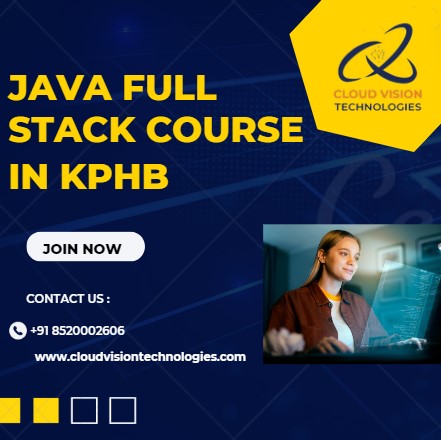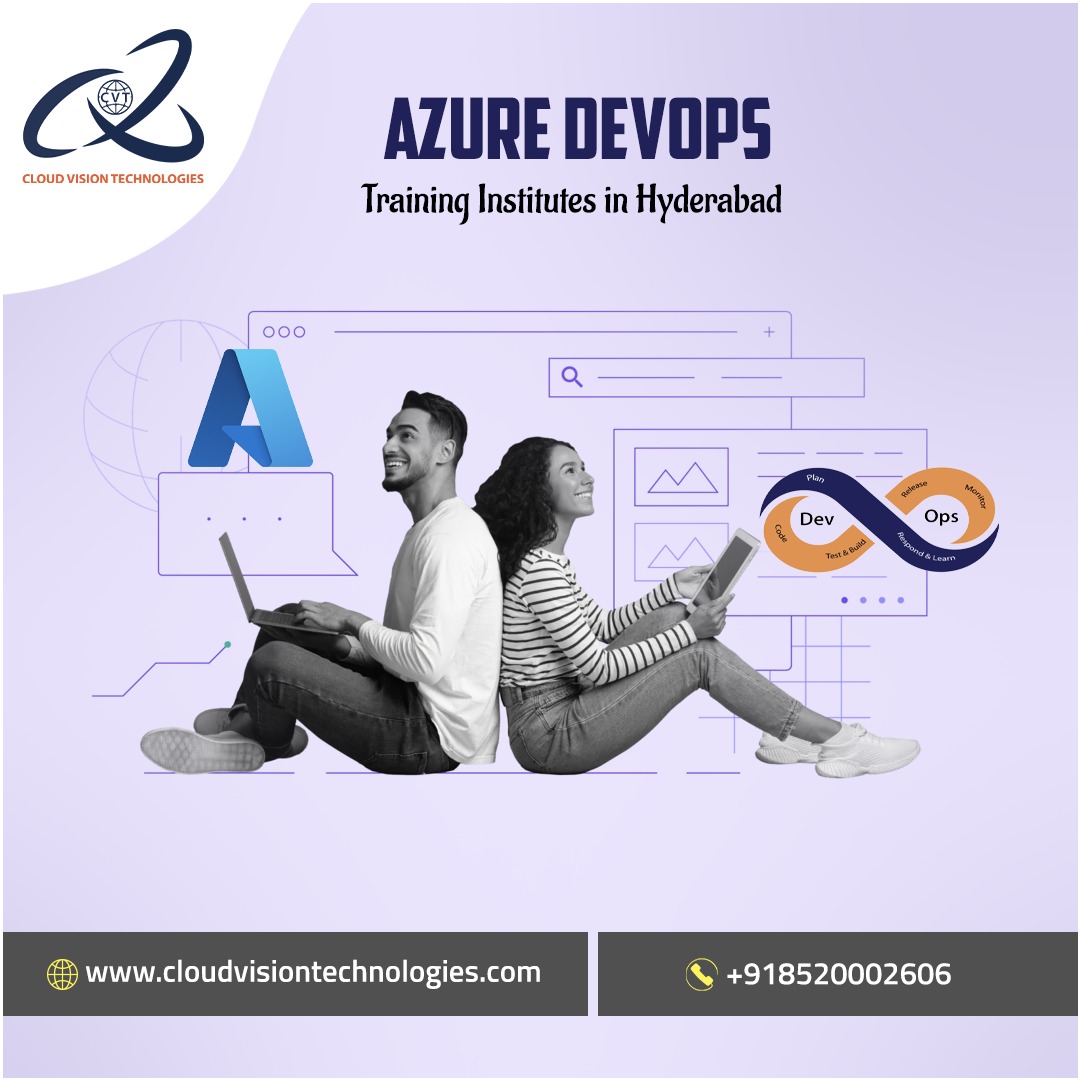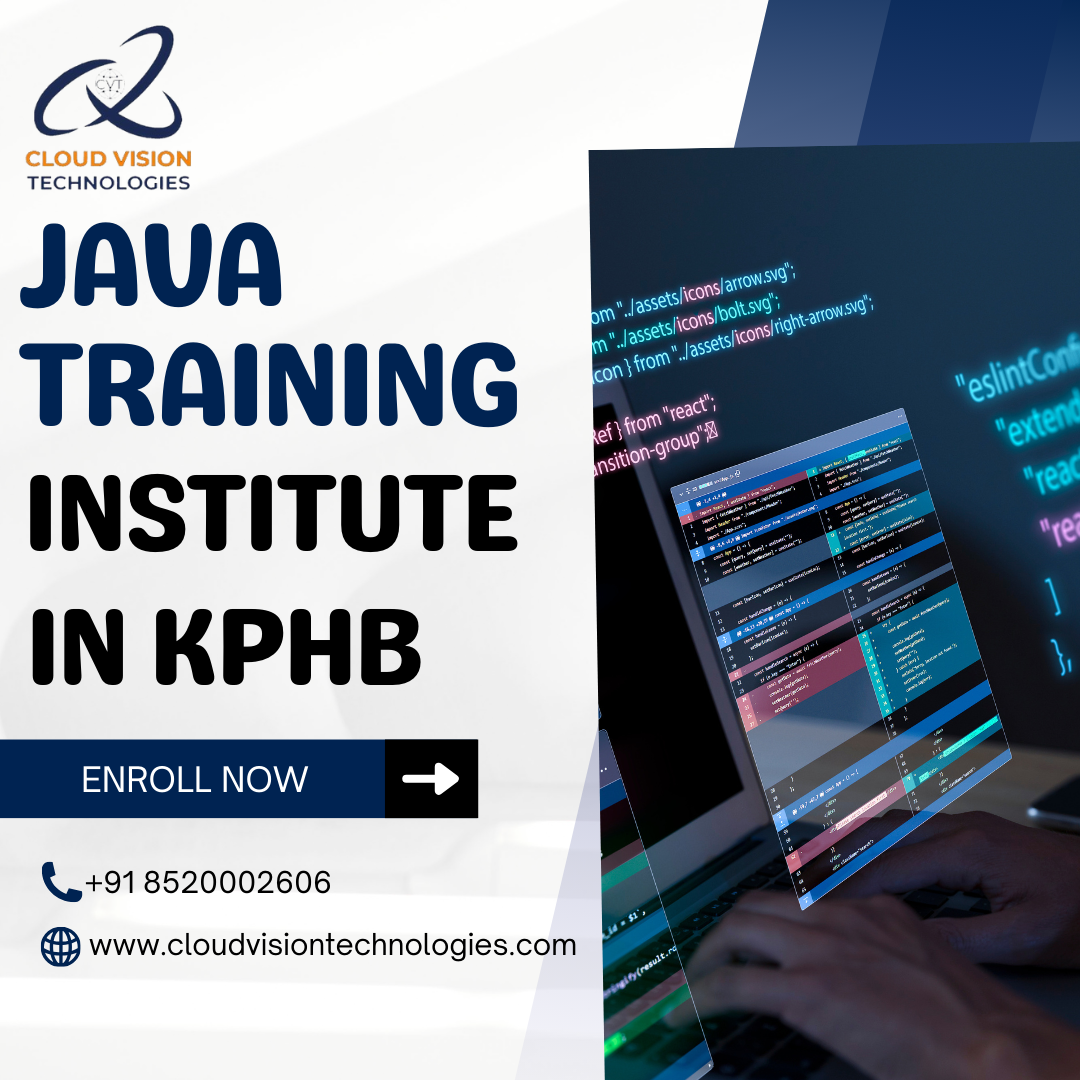
Best Java Course in KPHB – Cloud Vision Technologies
Title: Mastering Java: Unleashing the Power of Programming with Cloud Vision Technologies
Introduction:
Welcome to Cloud Vision Technologies provides the best java course in KPHB, where we are dedicated to unlocking the full potential of Java programming in KPHB. Java stands as a stalwart in the software development industry, celebrated for its reliability, efficiency, and adaptability across various domains. With its unparalleled portability, exceptional performance, and rich ecosystem of libraries and frameworks, Java has cemented its position as one of the most widely used programming languages globally.
As the demand for Java skills continues to soar, Cloud Vision Technologies provides the best java course in KPHB and stands as your premier destination for mastering Java programming in KPHB. Whether you’re a seasoned developer looking to enhance your Java proficiency or a beginner eager to embark on a journey into the world of software development, our comprehensive Java course is designed to meet your learning needs and aspirations.
Our commitment to excellence is reflected in every aspect of our Java course. We have meticulously curated the curriculum to cover all essential aspects of Java programming, from the fundamentals to advanced topics, ensuring that participants receive a well-rounded education that prepares them for real-world challenges. With a focus on hands-on learning and practical application, our course empowers participants to build robust, scalable, and secure applications using Java.
Cloud Vision Technologies provides the best java course in KPHB, we understand that every learner is unique, which is why our Java course caters to individuals of all levels of expertise. Whether you’re starting from scratch or seeking to deepen your existing knowledge, our expert instructors are here to guide you every step of the way. With their wealth of industry experience and passion for teaching, our instructors provide personalized attention and support to help you achieve your learning goals.
One of the key highlights of our Java course is its emphasis on practical experience. We believe that true mastery comes from hands-on practice, which is why our course includes numerous coding exercises, projects, and real-world case studies. Through these interactive learning experiences, participants not only solidify their understanding of Java concepts but also develop the practical skills needed to succeed in the field.
Furthermore, Cloud Vision Technologies provides the best java course in KPHB and is committed to fostering a collaborative and supportive learning environment. Our Java course encourages peer interaction, teamwork, and knowledge sharing, allowing participants to learn from each other’s experiences and perspectives. Whether it’s through group discussions, code reviews, or collaborative projects, participants have ample opportunities to engage with their peers and enhance their learning journey.
In addition to our comprehensive Java course, Cloud Vision Technologies provides the best java course in KPHB and also provides ongoing support and resources to help participants succeed beyond the classroom. From career guidance and interview preparation to access to our exclusive community forums and networking events, we are dedicated to empowering our learners with the tools and resources they need to thrive in their careers.

Cloud Vision Technologies provides the best java course in KPHB is your premier destination for mastering Java programming in KPHB. With our comprehensive curriculum, expert instructors, hands-on learning experiences, and supportive community, we are committed to providing the best Java course that equips you with the knowledge and skills needed to excel in the dynamic world of software development. Join us at Cloud Vision Technologies provides the best java course in KPHB and take the first step towards unlocking your full potential as a Java developer.
Understanding Java
Java stands as one of the most influential programming languages in the modern tech landscape. In this chapter, we delve deep into the fundamentals of Java programming, equipping participants with a robust understanding of its syntax, features, and architectural principles. From its humble beginnings as a language for consumer electronics to its evolution into a powerhouse for enterprise applications, we explore Java’s rich history and enduring significance in today’s technology-driven world.
Java’s Evolution:
Java was born in the early 1990s at Sun Microsystems, with a vision to create a platform-independent language for consumer electronics. Its founders, led by James Gosling, aimed to address the challenges posed by the proliferation of disparate hardware architectures and operating systems. Java’s mantra of “Write Once, Run Anywhere” resonated with developers worldwide, paving the way for its widespread adoption and evolution.
Over the years, Java has undergone significant transformations, adapting to the changing needs of the industry and embracing new technologies and paradigms. From its early days as an applet-driven language for web browsers to its current incarnation as a robust and scalable platform for enterprise applications, Java has continuously evolved to meet the demands of modern software development.
Key Features of Java:
Java’s success can be attributed to its rich set of features and capabilities that set it apart from other programming languages. Its syntax, inspired by C and C++, strikes a delicate balance between simplicity and power, making it accessible to developers of all levels. Java’s object-oriented nature promotes code reusability, modularity, and maintainability, enabling developers to build scalable and extensible software solutions.
Java’s architecture-neutral bytecode and virtual machine (JVM) abstraction layer provide a platform-independent execution environment, allowing Java applications to run seamlessly on any hardware and operating system. This platform independence, coupled with Java’s robust security features, makes it an ideal choice for building mission-critical and secure software systems.
Furthermore, Java’s extensive standard library and vibrant ecosystem of third-party libraries and frameworks empower developers to tackle a wide range of tasks, from GUI development and web programming to database connectivity and networking. Whether it’s Swing for desktop applications, Servlets and JSP for web development, or Spring for enterprise application development, Java offers a wealth of tools and resources to meet diverse programming needs.
Java’s Enduring Relevance:
Despite the emergence of new programming languages and technologies, Java remains a cornerstone of the software development industry. Its versatility, reliability, and performance continue to make it the language of choice for a wide range of applications, from mobile apps and web services to big data analytics and cloud computing.
As we delve deeper into the world of Java programming, participants will gain a newfound appreciation for its rich history, powerful features, and enduring relevance in today’s tech landscape. Armed with this understanding, they will be well-prepared to embark on their journey into Java development and unlock new possibilities in the world of software engineering.
Setting Up the Environment
Before participants can dive into Java programming, it’s essential to set up their development environment. In this chapter, we guide participants through the process of installing the Java Development Kit (JDK) and configuring Integrated Development Environments (IDEs) such as IntelliJ IDEA or Eclipse. By ensuring that their development environment is properly configured, participants can embark on their Java programming journey with confidence and efficiency.
Installing the Java Development Kit (JDK):
The Java Development Kit (JDK) is a prerequisite for Java development, as it includes the necessary tools and libraries for compiling, debugging, and running Java programs. We walk participants through the process of downloading and installing the latest version of the JDK from the official Oracle website. With step-by-step instructions and helpful tips, participants can install the JDK seamlessly on their operating system of choice, whether it’s Windows, macOS, or Linux.
Configuring Integrated Development Environments (IDEs):
Integrated Development Environments (IDEs) provide a powerful set of tools and features for Java development, including code editors, compilers, debuggers, and project management tools. In this chapter, we introduce participants to popular IDEs such as IntelliJ IDEA, Eclipse, and NetBeans, highlighting their key features and advantages. Participants learn how to download and install their preferred IDE, customize settings, and create new Java projects.
Setting Up Build Tools and Dependencies:
In addition to the JDK and IDE, participants may need to configure build tools and dependencies for their Java projects. We provide guidance on installing and configuring build automation tools such as Apache Maven or Gradle, as well as managing project dependencies using package managers like Apache Ivy or Apache Ant. By setting up build tools and dependencies, participants can streamline their development workflow and manage project dependencies more efficiently.
Testing the Environment:
Once the development environment is set up, it’s essential to verify that everything is working correctly. We provide instructions on how to create a simple “Hello, World!” Java program, compile and run it using the command line or IDE. Participants learn how to troubleshoot common issues, such as missing dependencies or misconfigured settings, ensuring that their environment is ready for Java development.
By the end of this, participants will have successfully set up their development environment for Java programming. With the JDK installed, IDE configured, and build tools set up, they are now ready to embark on their Java programming journey with confidence and enthusiasm.
Java Basics
In this, participants dive into the foundational concepts of Java programming, laying the groundwork for their journey into the world of software development. With their development environment set up, participants are ready to explore the core syntax and programming constructs of Java.
Variables and Data Types:
Participants learn about variables, which are used to store data in a Java program. They explore different data types such as integers, floating-point numbers, characters, booleans, and strings, understanding how to declare and initialize variables based on their data type.
Operators:
Participants delve into the world of operators, which are symbols used to perform operations on variables and values. They learn about arithmetic operators (e.g., +, -, *, /), relational operators (e.g., <, >, ==), logical operators (e.g., &&, ||, !), and assignment operators (e.g., =, +=, -=). Through interactive exercises, participants gain hands-on experience in using operators to manipulate data and control program flow.
Control Flow Structures:
Participants explore control flow structures, which allow them to control the execution flow of their Java programs. They learn about conditional statements such as if, else if, and else, as well as switch statements for handling multiple conditions. Additionally, participants learn about loop structures such as for, while, and do-while, enabling them to iterate over data and perform repetitive tasks efficiently.
Methods:
Participants learn about methods, which are reusable blocks of code that perform specific tasks. They explore how to declare methods, pass arguments, and return values, understanding the importance of modularizing code for better organization and reusability. Through practical examples, participants gain proficiency in defining and calling methods to encapsulate functionality within their Java programs.
By mastering the basics of Java syntax and programming constructs in this chapter, participants lay a solid foundation for their journey into more advanced topics. Armed with a thorough understanding of variables, data types, operators, control flow structures, and methods, participants are well-equipped to tackle real-world programming challenges and explore the full potential of Java.
Object-Oriented Programming (OOP) Concepts
Java’s support for object-oriented programming (OOP) is one of its defining features, enabling developers to build modular, reusable, and maintainable code. In this chapter, participants explore the principles of OOP and their implementation in Java, gaining a deeper understanding of how to design and develop object-oriented solutions.
Classes and Objects:
Participants learn about classes, which serve as blueprints for creating objects in Java. They explore how to define classes, declare attributes (instance variables), and implement methods (member functions) to encapsulate behavior. Additionally, participants learn how to create objects from classes using the new keyword, initializing them with data and invoking their methods.
Inheritance:
Participants delve into the concept of inheritance, which allows one class (subclass) to inherit attributes and methods from another class (superclass). They learn how to create class hierarchies, extending existing classes to add new functionality or modify existing behavior. Through practical exercises, participants gain hands-on experience in implementing inheritance relationships to promote code reuse and extensibility.
Polymorphism:
Participants explore polymorphism, which allows objects of different classes to be treated as objects of a common superclass. They learn about method overriding, where a subclass provides a specific implementation of a method defined in its superclass, and method overloading, where multiple methods with the same name but different parameters coexist in a class. By understanding polymorphism, participants can write flexible and adaptable code that can accommodate varying object types and behaviors.
Encapsulation:
Participants learn about encapsulation, which involves bundling data (attributes) and methods (behavior) within a class and controlling access to them through access modifiers such as public, private, and protected. They understand the importance of encapsulation in promoting data integrity, hiding implementation details, and facilitating code maintenance. Through interactive exercises, participants gain practical experience in implementing encapsulation to create robust and secure Java programs.
By mastering object-oriented programming concepts in Java, participants are able to design and develop modular, reusable, and maintainable code that meets the demands of real-world software development projects. Armed with a thorough understanding of classes, objects, inheritance, polymorphism, and encapsulation, participants are well-equipped to tackle complex programming challenges and unleash the full potential of Java.
Conclusion
Cloud Vision Technologies provides the best java course in KPHB and offers a comprehensive and immersive Java training program designed to equip participants with the knowledge and skills needed to excel in the world of software development. Through a structured curriculum that covers fundamental concepts such as variables, data types, control flow structures, and object-oriented programming principles, participants gain a solid foundation in Java programming.
By providing hands-on experience through interactive exercises, coding challenges, and real-world projects, Cloud Vision Technologies provides the best java course in KPHB ensures that participants not only understand Java syntax and programming constructs but also develop practical problem-solving skills. The emphasis on practical application allows participants to build confidence in their ability to design and develop Java applications that meet real-world requirements.
Moreover, Cloud Vision Technologies provides the best java course in KPHB and fosters a collaborative and supportive learning environment where participants can engage with instructors and peers, share knowledge, and learn from each other’s experiences. This collaborative approach encourages creativity, innovation, and continuous learning, enabling participants to stay abreast of the latest developments in Java and software engineering.
With a focus on excellence and a commitment to empowering learners with the tools and resources they need to succeed, Cloud Vision Technologies provides the best java course in KPHB and stands as a premier destination for mastering Java programming. Whether you’re a beginner taking your first steps in programming or an experienced developer seeking to enhance your Java skills, Cloud Vision Technologies provides the best java course in KPHB provides guidance, support, and resources to help you achieve your goals.
Join us at Cloud Vision Technologies provides the best Java course in KPHB and embark on a transformative journey towards mastering Java and unlocking new opportunities in the ever-evolving field of software development. With our comprehensive training program and dedicated instructors, you’ll be well-equipped to tackle the challenges and seize the opportunities that await in the dynamic world of Java programming.
Address: Cloud Vision Technologies provides best java course in KPHB
Location: Office no : 1802B, 18th floor, Manjeera Trinity corporate Building,
KPHB, Kukatpally, Hyderabad, Telangana 500072
Contact Number : +91 8520002606
Mail ID: info@cloudvisiontechnologies.com





